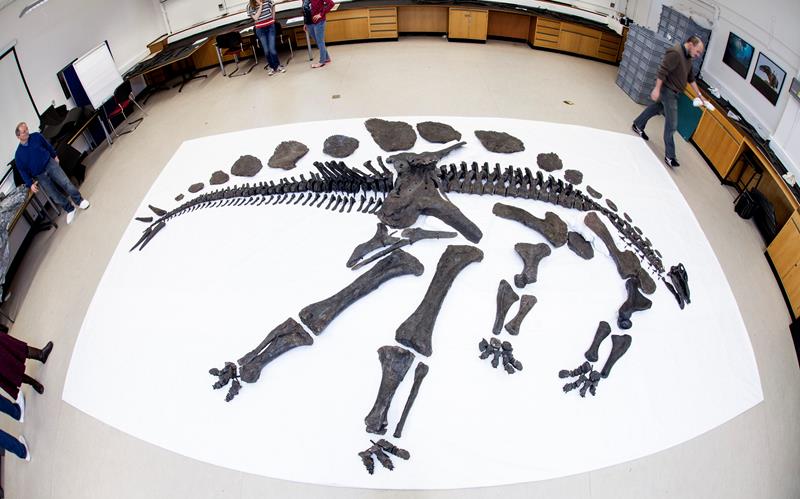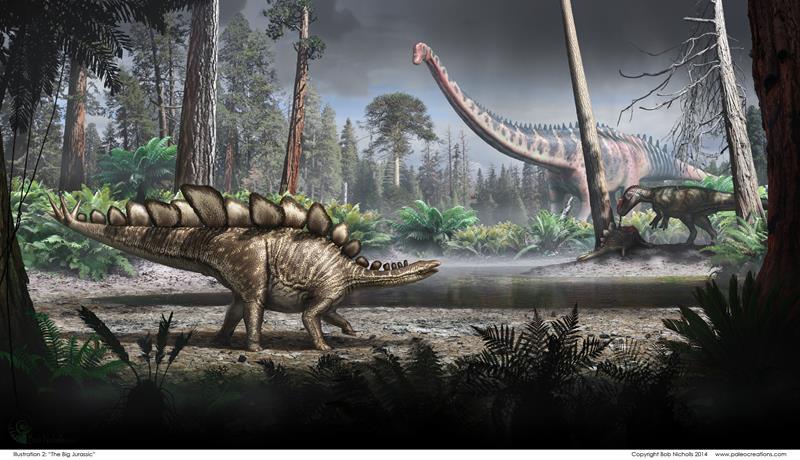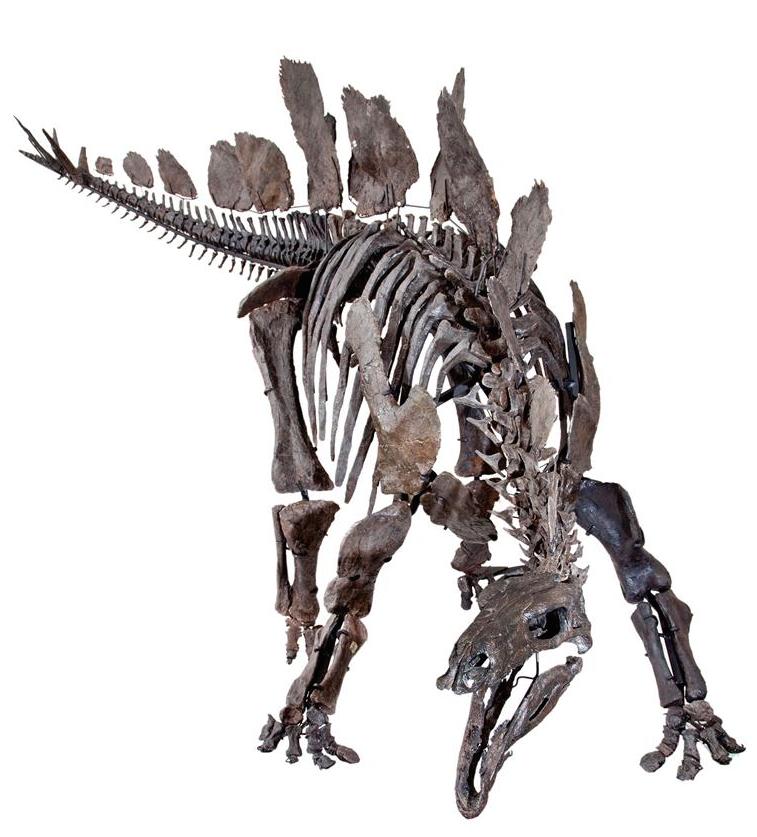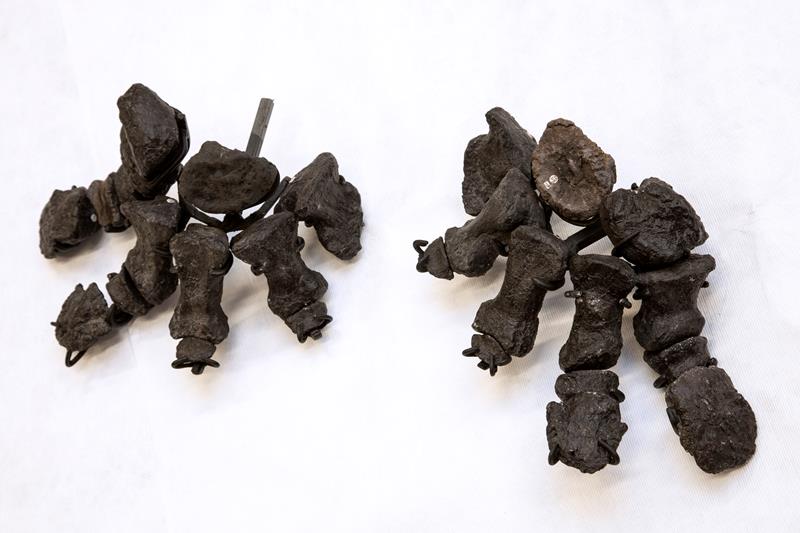Photos: Incredible Near-Complete Stegosaurus Skeleton
For the first time in nearly 100 years, the near-complete skeleton of a dinosaur will go on display at the Natural History Museum in London. The dinosaur, a stegosaurus, is only missing its left arm and the base of its tail, and will likely spur a handful of studies about the anatomy of the Stegosaurus stenops species. [Read full story on the stegosaurus skeleton]
Wyoming find
Excavators found the stegosaurus (Stegosaurus stenops) at the Red Canyon Ranch in Wyoming. Stegosaurus roamed areas in the American West during the late Jurassic Period, about 155 million to 150 million years ago. (Photo credit: © The Trustees of Natural History Museum, London.)
Dinosaur graveyard
Researchers at the Natural History Museum laid out the stegosaurus bones before mounting them for display, which will open to the public on Dec. 4. (Photo credit: © The Trustees of Natural History Museum, London.)
Jurassic jaunt
An artist's interpretation of the stegosaurus, and the environment it lived in, during the late Jurassic Period. (Photo credit: © Natural History Museum, London/Nicholls | paleocreations.com.)
Get the world’s most fascinating discoveries delivered straight to your inbox.
Fearsome dino
The stegosaurus stands 9.5 feet tall (2.9 meters), 18.3 feet long (5.6 m) and has more than 300 bones. It's unclear whether it was a male or a female, but the specimen had reached young adulthood, the researchers said. (Photo credit: © Natural History Museum, London.)
Giant Plates
The name stegosaurus means "roofed lizard," because paleontologists initially thought that the dinosaurs' plates lay flat on its back, much like shingles on the roof of a house. Now, evidence suggests that the plates stood upright on the animals' backs and tail. (Photo credit: © Trustees of Natural History Museum, London.)
Glowing green
A computer model of the stegosaurus. Researchers have been measuring, photographing and scanning the dinosaur since the bones arrived at the museum in December 2013. (Photo credit: © Trustees of Natural History Museum, London.)
Stegosaurus feet
The skeleton is nearly complete, and includes the feet of the stegosaurus. The stegosaurus skeleton is now part of the museum's collection of 80 million specimens. (Photo credit: © Trustees of Natural History Museum, London.)
Follow Laura Geggel on Twitter @LauraGeggel. Follow Live Science @livescience, Facebook & Google+.

Laura is the managing editor at Live Science. She also runs the archaeology section and the Life's Little Mysteries series. Her work has appeared in The New York Times, Scholastic, Popular Science and Spectrum, a site on autism research. She has won multiple awards from the Society of Professional Journalists and the Washington Newspaper Publishers Association for her reporting at a weekly newspaper near Seattle. Laura holds a bachelor's degree in English literature and psychology from Washington University in St. Louis and a master's degree in science writing from NYU.









